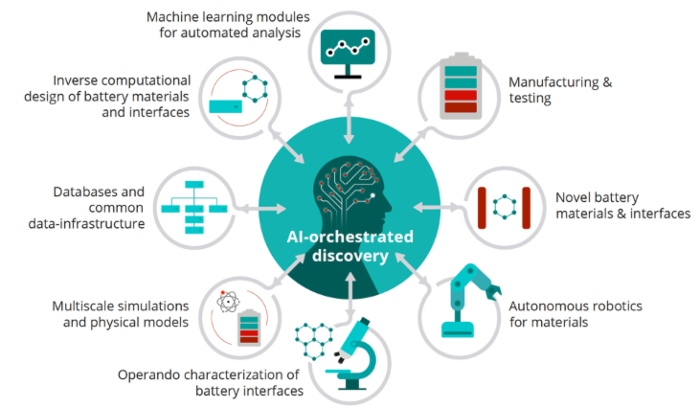Batteries will play a crucial role in the phase-out of fossil fuels, in particular in the transport sector, but if we are to reach the target of 70 per cent reduction in CO2 emissions before 2030, as Danish climate law calls for, we need cheaper and more sustainable alternatives to the existing batteries.
That is a big challenge, because the development of new batteries takes a long time - longer than we can wait for the green transition. A new EU project, BIG-MAP (Battery Interface Genome - Materials Acceleration Platform), aims at accelerating the speed of battery development by changing the way we invent batteries, so that future sustainable and ultra-high-performance batteries can be developed 10 times faster than today.
The budget for the project is DKK 150 million, of which DKK 20 million goes to DTU and DKK 3 million to the IT University of Copenhagen.
BIG-MAP is a central part of the major European battery research initiative, BATTERY2030+. It involves 34 partners from 15 countries and is the EU's most expensive research project on developing sustainable batteries.
The vision is not only to be able to develop new batteries much faster, but also to ensure that they can store energy extremely efficiently, can be produced sustainably and at such a low cost that in the future it will be profitable to store electricity from, for example solar and wind in batteries. This however requires fundamentally new materials and rapid progress within battery technologies, which we may not even have heard of yet.
"We have to 'reinvent' the way we invent batteries. Last year the Nobel Prize in chemistry went to the inventors of the Li-ion battery. A fantastic invention, but it took 20 years from idea to product - we need to be able to do it in a tenth of that time if we are to have sustainable batteries ready for the green transition," says Tejs Vegge, professor at DTU Energy and head of BIG- MAP.
Inventing how to invent
"You can say that the project is not about inventing a new battery, but a new way of inventing new batteries - which we will also use to invent new batteries," Tejs Vegge explains and continues
"We need to develop a whole new scientific platform and a new common 'battery language', which allows artificial intelligence to be used to obtain, analyze and exploit data from all parts of the research and development value chain at the same time - with minimum human interference and without being bound by traditional development processes."
Using machine-learning algorithms coupled with physical models and data it will - for example- be possible to predict the durability of a new battery in a fraction of the time it has taken so far. This can be done through large-scale computer simulations, experiments and tests that are continuously evaluated without human intervention.







